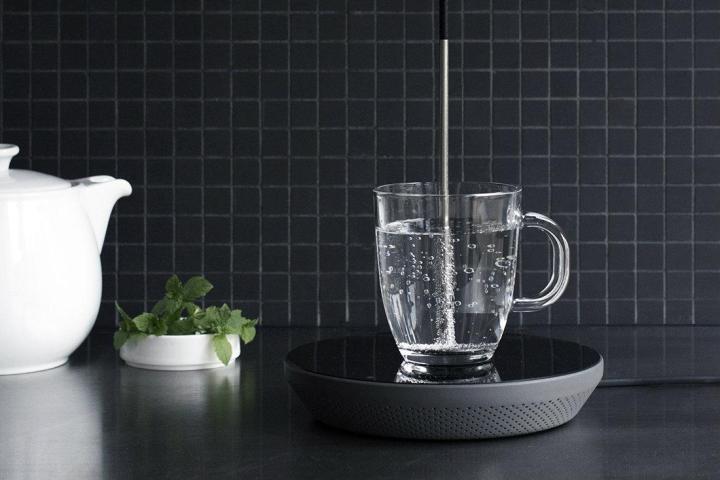
“If everyone boiled only the water they needed every time they used the kettle, we could save enough electricity in a year to power the UK’s street lights for nearly seven months,” Caroline Rams of the U.K.’s Energy Saving Trust told The Telegraph in 2010. In 2013, the Trust estimated Brits could save £68m a year by not overfilling the kettle.
In order to combat this problem, Danish design studio Chudy and Grase created the Miito. It’s not a tea kettle. Instead, it’s a new way to boil water. It consists of two parts: an induction base and a magnetic rod. Whether you’re heating a mug or a pot full of water, you drop the rod into the container. Miito creates an electromagnetic field, heating the water. It was even shortlisted for a James Dyson Award.
Americans drink a lot of tea, though it’s primarily iced. However, the Miito seems like it could work just as well for heating a mug of cocoa or a bowl of soup, if you didn’t want to use your microwave and prefer your hot chocolate piping hot. Still, even if this just gets the tea-swilling population to think about how much water they use in their kettles, it’s a step in the right energy-saving direction.
It’s been over six months since we first wrote about the device, and it’s come a long way. Miito is now on Kickstarter. For about $103, you can get your tea time on, though not until April 2016.
With over 2,000 backers, it seems the idea is catching on. It’s even inspired us to start calling our four-o’clock snack break “afternoon tea.”
Updated 5/15/2015: Updated to reflect its availability on Kickstarter.


